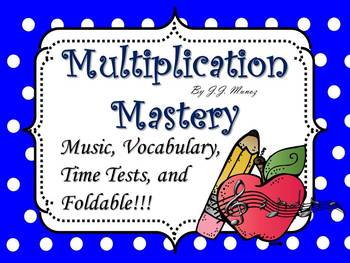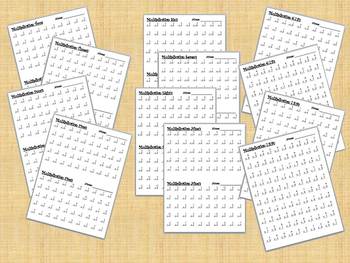Multiplication Songs Mastery Bundle
Jose Munoz
49 Followers
Grade Levels
2nd - 6th
Subjects
Standards
CCSS2.OA.C.3
CCSS2.OA.C.4
CCSS3.OA.A.1
CCSS4.OA.A.1
CCSS5.OA.A.2
Formats Included
- Zip
Jose Munoz
49 Followers
Description
My students are hook on my multiplication songs! I have taken popular, current songs and attached multiplication lyrics to the karaoke versions.
Songs from Rob Thicke, Justin Bieber, Pink, Marc Anthony, Taylor Swift, Bruno Mars, Justin Timberlake, Pharrel and DJ Khaled
*Listen to the preview of snippets of ALL songs*
Also I have the 2's on youtube with lyrics: http://www.youtube.com/watch?v=HLK2RzBTONQ
I have songs for 2's through 9's
One song per week is what I do!
Bundle includes:
All songs 2 through 9 in mp3 or m4a format
Lyrics to ALL songs
Vocabulary Posters
Time tests for each number
Vocabulary Foldable
Worksheets to show arrays and repeated addition
Songs from Rob Thicke, Justin Bieber, Pink, Marc Anthony, Taylor Swift, Bruno Mars, Justin Timberlake, Pharrel and DJ Khaled
*Listen to the preview of snippets of ALL songs*
Also I have the 2's on youtube with lyrics: http://www.youtube.com/watch?v=HLK2RzBTONQ
I have songs for 2's through 9's
One song per week is what I do!
Bundle includes:
All songs 2 through 9 in mp3 or m4a format
Lyrics to ALL songs
Vocabulary Posters
Time tests for each number
Vocabulary Foldable
Worksheets to show arrays and repeated addition
Total Pages
Answer Key
N/A
Teaching Duration
N/A
Report this resource to TPT
Reported resources will be reviewed by our team. Report this resource to let us know if this resource violates TPT’s content guidelines.
Standards
to see state-specific standards (only available in the US).
CCSS2.OA.C.3
Determine whether a group of objects (up to 20) has an odd or even number of members, e.g., by pairing objects or counting them by 2s; write an equation to express an even number as a sum of two equal addends.
CCSS2.OA.C.4
Use addition to find the total number of objects arranged in rectangular arrays with up to 5 rows and up to 5 columns; write an equation to express the total as a sum of equal addends.
CCSS3.OA.A.1
Interpret products of whole numbers, e.g., interpret 5 × 7 as the total number of objects in 5 groups of 7 objects each. For example, describe a context in which a total number of objects can be expressed as 5 × 7.
CCSS4.OA.A.1
Interpret a multiplication equation as a comparison, e.g., interpret 35 = 5 × 7 as a statement that 35 is 5 times as many as 7 and 7 times as many as 5. Represent verbal statements of multiplicative comparisons as multiplication equations.
CCSS5.OA.A.2
Write simple expressions that record calculations with numbers, and interpret numerical expressions without evaluating them. For example, express the calculation “add 8 and 7, then multiply by 2” as 2 × (8 + 7). Recognize that 3 × (18932 + 921) is three times as large as 18932 + 921, without having to calculate the indicated sum or product.





